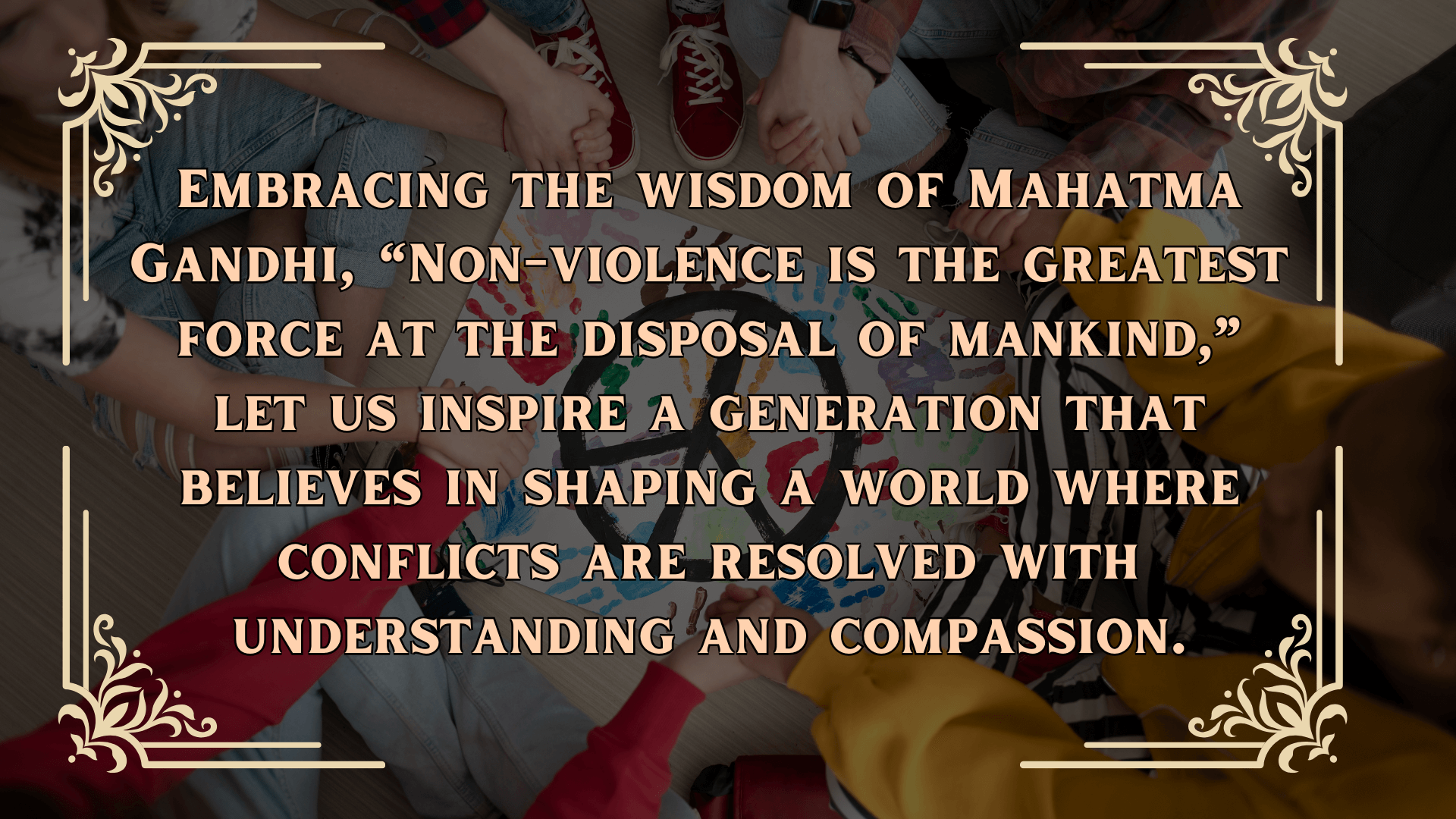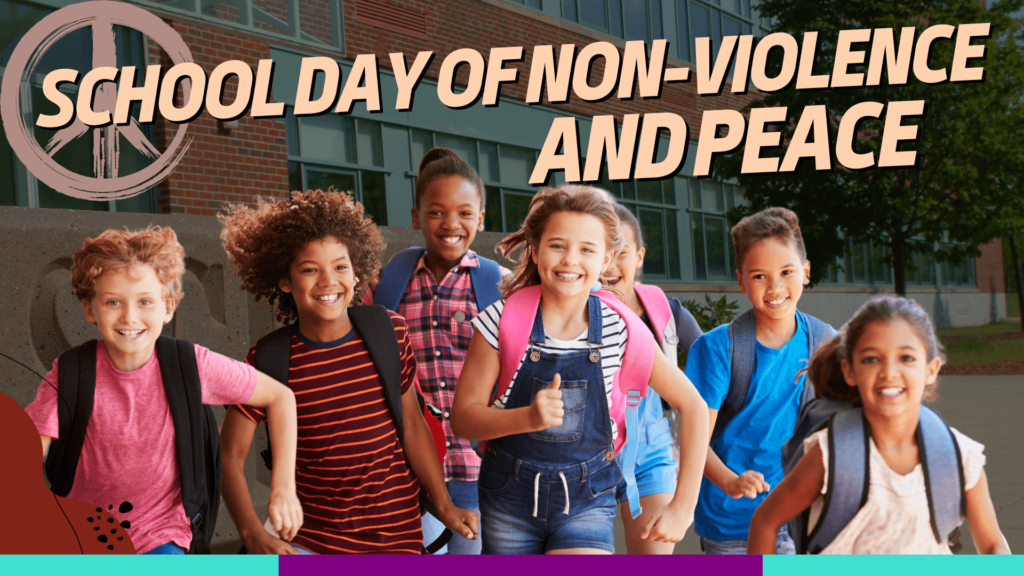Every human desire to live a tranquil life in a safe environment. Despite the uncertainty of achieving this goal, people can still pass on this mindset to future generations. In the rapidly evolving world of today, there is a growing desire to instill a sense of peace and non-violence among school students, aiming to pave the way for a better tomorrow.
School Day of Non-violence and Peace allows the students to know the values of peace, tolerance, and non-violence. It is observed that this day is annually celebrated on 30th January, on the death anniversary of Mahatma Gandhi, in every school worldwide to spread love and promote peace. Back in 1964, Llorenç Vidal Vidal, The Spanish poet, educator, and pacifist established School Day of Non-violence and Peace, which is also referred to as Dia Escolar de la No-violència i la Pau (DENIP). This special day reminds the schools to cultivate a culture of peace, respect, and understanding among the students, teachers, and society. Why School Day of Non-violence and Peace is important for school students?
Why School Day of Non-violence and Peace is important for school students?
In the recent past, Schools have witnessed an alarming rise in violent activities against children, making it a significant concern. Daily, Students encounter various threats such as physical fighting, peer–to–peer violence, in-person and online bullying, and sexual harassment. This would result in long-term impacts which lead to depression, anxiety, and even suicide in extreme cases. Undoubtedly, School Day of Non-violence and Peace plays a key role in assisting the school students to learn skills of negotiation, problem-solving, and critical thinking, which enables them to resolve conflicts without choosing violence. How to celebrate School Day of Non-violence and Peace?
How to celebrate School Day of Non-violence and Peace?
1) ENCOURAGE READING
One of the most transformative ways of promoting peace is reading. Books allow readers to transcend borders, break stereotyping, promote tolerance, and foster empathy. Initiatives like book clubs and reading corners would help the students to understand the importance of peace and its potential impact on the world at large.
2) ASSEMBLIES AND WORKSHOPS
Schools may organize special assemblies for the students and teachers to express the significance of non-violence and share their personal opinions and ideas. Conducting workshops is another way to educate the students on conflict resolution and how to handle a challenging situation peacefully. This would help the students to navigate conflicts in a non-violent.
3) ENGAGE IN CREATIVE ACTIVITIES
Schools can encourage students to engage in creative activities such as poetry writing, essay writing, art exhibitions, and drama under the themes of peace and non-violence. It not only assists in boosting the creativity of the students but also helps to create an environment that prioritizes peace and understanding. School Day of Non-violence and Peace serves as a powerful tool in shaping the values, attitudes, and perspectives of our future generation. As the schools contribute to promoting peace and tolerance, they transform the world into a more harmonious society and a surrounding filled with positivity.
School Day of Non-violence and Peace serves as a powerful tool in shaping the values, attitudes, and perspectives of our future generation. As the schools contribute to promoting peace and tolerance, they transform the world into a more harmonious society and a surrounding filled with positivity.
On this peace-making occasion, let us remember this quote from Mahatma Gandhi. “Non-violence is the greatest force at the disposal of mankind.”
Written By:

Rtr. Shimra Shamil
(Junior Blog Team Member 2023-24)




